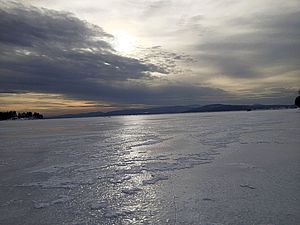LCC and EPA Call for More Detail & Deadlines In VT’s Lake Clean-up Plan

LCC called on DEC to provide more detail and steps needed to implement the lake clean-up plan. Photo by J. Rossi.
In late November Vermont released a new “Proposal for a Clean Lake Champlain.” The public comment period for the proposal ended on January 17th. LCC and EPA were among 42 individuals and organizations to weigh in on the state plan.
LCC noted that the state “put forth a robust suite of activities that will go a long way to better managing water resources.” However, the proposal offers “no indication of the amount of phosphorus load reductions that can reasonably be anticipated from each strategy,” and the lack of such analysis makes it “impossible to conclude that the plan offers a reasonable assurance of meeting water quality standards.” We called on DEC to provide more detail both as to expected pollution reductions and steps needed to implement the plan.
EPA’s comments were similar to LCC’s. In a nine-page letter, EPA praised the proposal as, “broad in scope and ambition, appropriately reflecting the challenge of restoring the health of Lake Champlain,” but noted that the proposal “lacks the specific details of what will be done when.” They also noted that climate change needs to be addressed throughout the plan.
EPA has called on the state to develop a schedule by the end of March for key actions and program implementations across the Vermont portion of the Basin. They have indicated that a more detailed implementation plan accompanied by a letter of commitment from the Governor is necessary to provide reasonable assurance that pollution reductions will occur. Following Basin-wide plan development, EPA expects the state to develop sub-Basin plans which will be evaluated every five years to assess progress toward lake clean-up.
The proposal and comments are all in response to development of a new pollution budget (known as a TMDL or "Total Maximum Daily Load") for the lake. EPA disapproved the previous pollution budget in 2011 and has been working on preparing a new one since then. The pollution budget allocates pollution loads to facilities with federal permits – point sources – and all other sources collectively referred to as non-point sources. Non-point sources include agriculture, most stormwater runoff and riverbank erosion. However, in order to allocate pollution to non-point sources the state must demonstrate a reasonable assurance that pollution reductions from those sources can be achieved.
